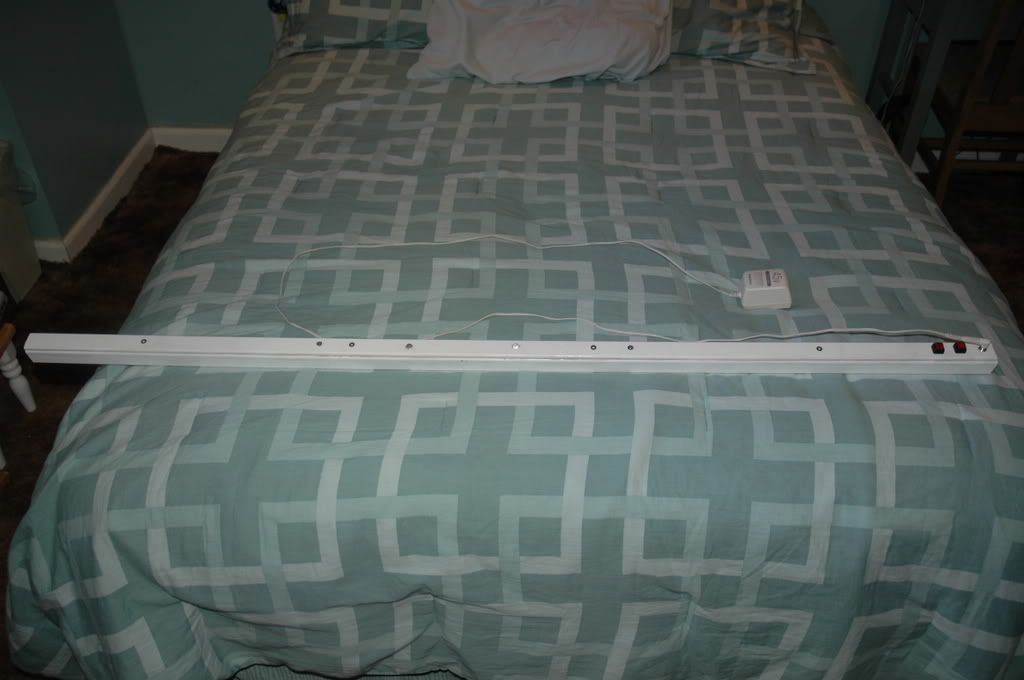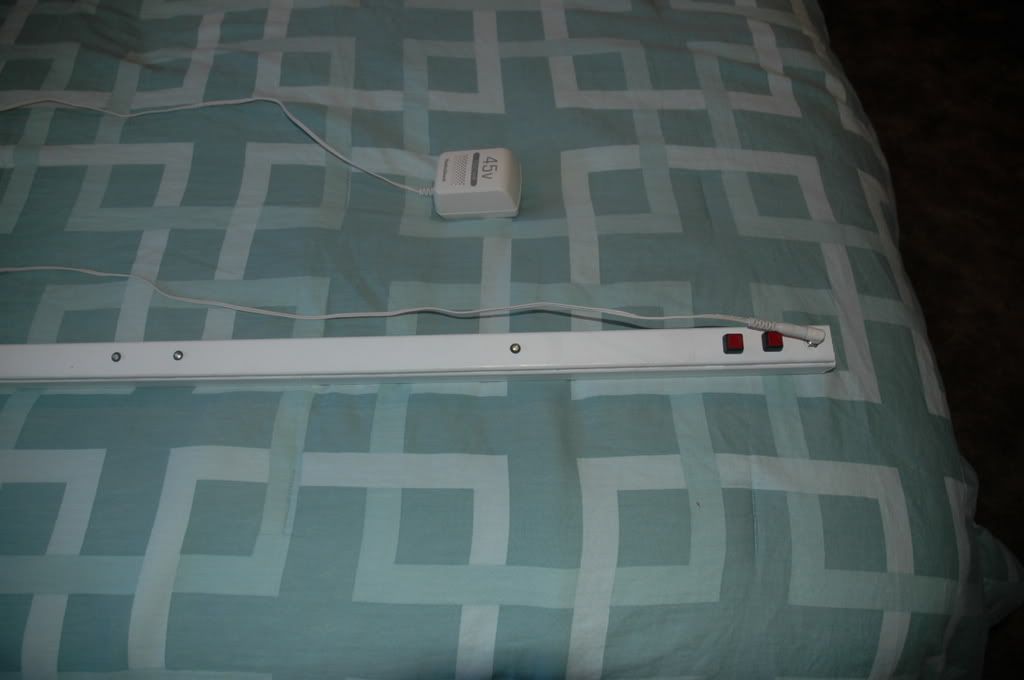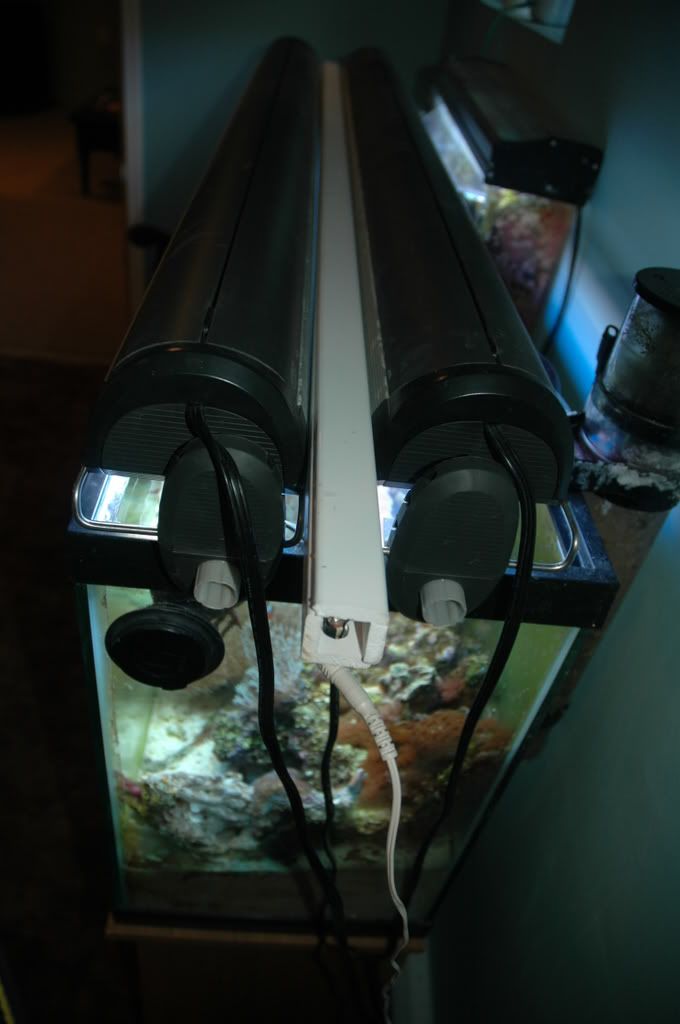What is claimed is:
1. A aquarium lighting system comprising an LED array comprising:
multiple white light LEDs;
multiple blue light LEDs; and
a control system for separately controlling a) the intensity of white light output by the white LEDs, and b) the intensity of blue light output by the blue LEDs.
2. The aquarium lighting system of claim 1, wherein the control system further comprises:
presets for 90% blue and 10% white, 80% blue and 20% white, and 60% blue and 40% white.
3. The aquarium lighting system of claim 1, wherein the multiple blue light LEDs further comprise:
a subset of blue light LEDs within the multiple blue LEDs, the subset separately controllable from the multiple blue LEDs for moonlight simulation.
4. The aquarium lighting system of claim 1, wherein the control system further comprises:
a timer for automatically varying the relative output power of white and blue light from the array according to a time of day, and-or day of the week, month, and-or year.
5. The aquarium lighting system of claim 1, further comprising:
the blue light and white light LEDs alternately intermixed in the array.
6. The aquarium lighting system of claim 1, further comprising:
the LED array is one of rectangular, square, circular, or oval.
7. The aquarium lighting system of claim 1, further comprising:
multiple cyan light LEDs.
8. The aquarium lighting system of claim 1, further comprising:
a heat sink system mounted to the LED array.
9. The aquarium lighting system of claim 8, wherein the heat sink system mounted to the LED array further comprises:
a primary heat sink comprising rows of conductive material aligned with the backing of LEDs of the array, and a secondary heat sink comprising a housing of the LED array.




